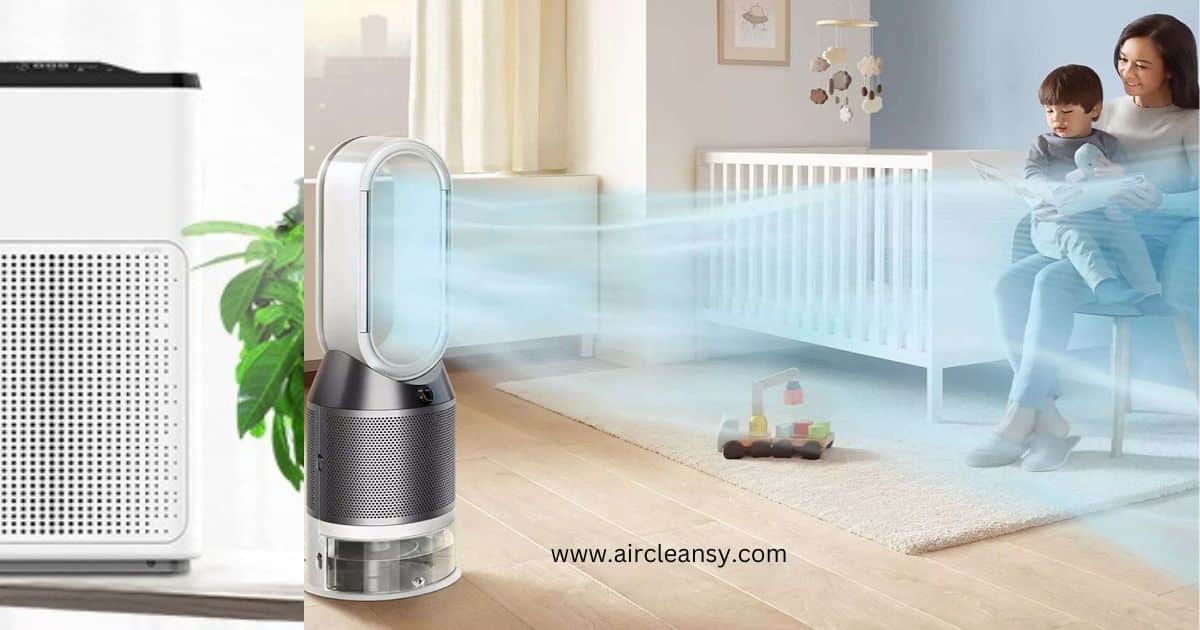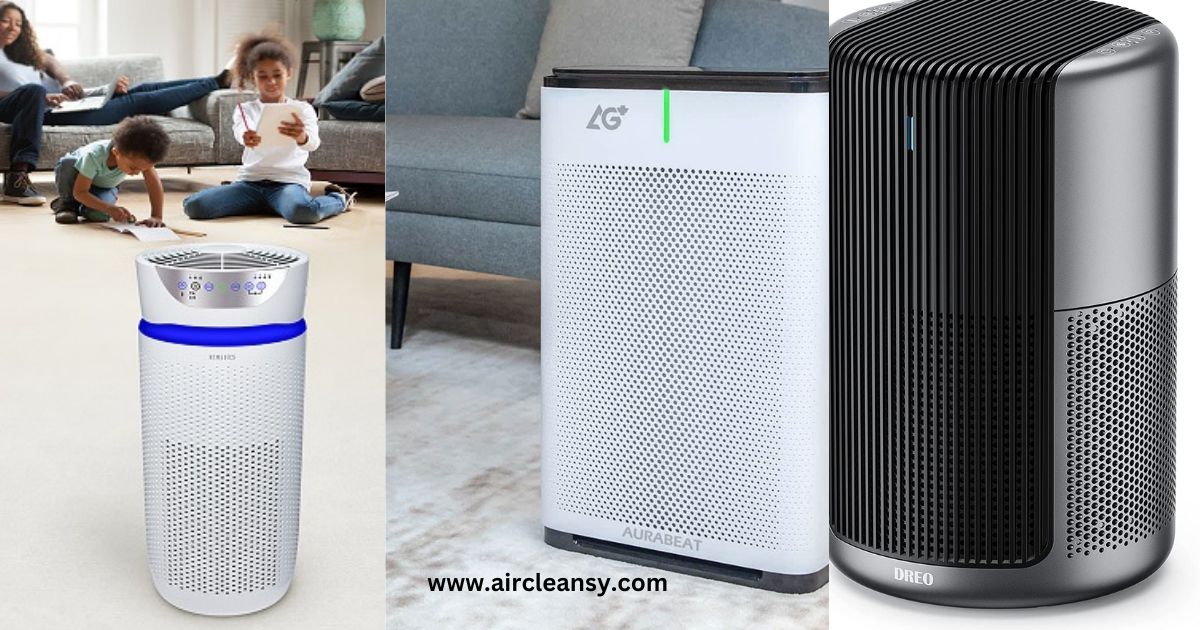We all know that pollution is bad for our health. It can cause a variety of respiratory problems and has even been linked to cancer. But what many people don’t know how do air purifiers remove pollution in our homes.
As per the EPA, indoor air pollution is one of the top five environmental health risks. Indoor air can be more polluted than outdoor air, and since we spend most of our time indoors, it’s important to make sure the air inside our homes is as clean as possible.
In this post, we will take a closer look at how air purifiers work and how they can help improve the quality of the air we breathe. We will also discuss some of the most common types of pollution and how air purifiers can help address each one. So read on to learn more about this important topic!
How Does An Air Purifier Work?

At its most basic, an air purifier is a device that clears the air in a room of contaminants. It does this by drawing in air from the room, filtering out the contaminants, and then releasing clean air back into the room. Air purifiers work by pulling in contaminated air, filtering out harmful particles, and releasing clean air back into the room.
There are a variety of different types of air purifiers, but they all work using one or more of three basic principles: mechanical filters, activated carbon filters, and ozone generators.
Mechanical filters are the simplest type of air purifier. They work by trapping particles of dust, pollen, and other allergens in a mesh or other type of filter.
Activated carbon filters are more effective at trapping smaller particles, such as chemical vapors and odors.
Ozone generators produce ozone, a form of oxygen that is very effective at breaking down pollutants such as mold spores and bacteria. Air purifiers can use one or more of these principles to clean the air in a room.
What Are the Most Common Types of Pollution?

There are many different types of pollution, but some are more common than others. Here are four of the most common types of pollution:
Air Pollution
This occurs when harmful substances are released into the air, such as car exhaust or factory emissions. Air pollution can cause respiratory problems, and it can also contribute to global warming. (Source)
Water Pollution
This occurs when harmful substances are released into bodies of water, such as rivers or lakes. Water pollution can contaminate drinking water, and it can also harm aquatic wildlife. (Source)
Soil Pollution
This occurs when harmful substances introduced into the soil, such as pesticides or industrial waste. Soil pollution can contaminate crops and lead to the depletion of essential nutrients in the soil. (Source)
Noise Pollution
This occurs when noise levels, such as traffic or construction, become too high. Noise pollution can cause hearing loss, and it can also lead to stress and anxiety. (Source) We can remove air pollution by making some necessary amendments explained here.
How Do Air Purifiers Remove Pollution?
Air purifiers work by drawing in polluted air and passing it through filters that trap the contaminants. The most effective air purifiers use HEPA and activated carbon filters to remove a wide range of pollutants, including dust, pollen, smoke, and VOCs. By using an air purifier in your home or office, you can breathe easier knowing that you are protected from harmful airborne contaminants.
There are many types of pollution, each with its unique causes and effects. However, one thing that all forms of pollution have in common is the ability to harm our health.
What Are the Different Types of Air Purifiers?

Air purifiers come in many shapes and sizes, but they all have one common goal: clean the air. The type of air purifier you need will depend on the size of the space you want to purify, the specific contaminants you want to remove, and your budget.
Some air purifiers are designed to remove dust, pollen, and other allergens from the air, while others are better at removing smoke, fumes, and VOCs. Some units even use ultraviolet light to kill bacteria and viruses.
When choosing an air purifier, it’s important to consider the specific needs of your home or office. With so many different types of air purifiers on the market, there’s sure to be one that’s perfect for you.
The most common type of air purifier uses a HEPA filter to trap contaminants. HEPA filters are made of very fine mesh that can capture particles as small as 0.3 microns. This means that HEPA filters can remove 99.97% of all airborne contaminants, including pollen, dust mites, mold spores, and pet dander. Air purifiers can make a huge difference in indoor air quality, and they are an essential tool for anyone with allergies or asthma.
What Are the Benefits of Air Purifiers?

Air purifiers offer a number of benefits for both your health and your home.
- Removing pollutants from the air can help reduce your risk of respiratory problems, allergies, and other health conditions.
- In addition, by eliminating odors and improving indoor air quality, air purifiers can create a more pleasant environment in your home.
- Additionally, many air purifiers also feature filters that capture dust and other allergens, helping keep your home clean and reducing the housework you need to do.
Overall, air purifiers offer a wide range of benefits that make them an essential part of any healthy home.
FAQs
Now, let’s talk about some frequently asked questions. So that you will get the more clear picture of the topic:
Do Air Purifiers Remove Pollutants?
Yes, Air purifiers can help to remove pollutants from the air, making it cleaner and healthier to breathe. Additionally, many air purifiers also feature filters that capture dust and other allergens, helping keep your home clean and reducing the housework you need to do.
Do Air Purifiers Help With Allergies?
Yes, air purifiers can help to reduce your risk of allergies by removing allergens from the air. In addition, many air purifiers also feature filters that capture dust and other allergens, helping keep your home clean and reducing the housework you need to do.
What Toxins Do Air Purifiers Remove?
It can remove many pollutants from the air, including dust, pollen, smoke, fumes, and VOCs. However, it cannot remove all types of pollutants.
Are Air Purifiers Worth It?
Yes, air purifiers offer many benefits for your health and home. They can help to reduce your risk of respiratory problems, allergies, and other health conditions.
Do Air Purifiers Really Make a Difference?
Yes, air purifiers can make a huge difference in indoor air quality. They are an essential tool for anyone with allergies or asthma.
What Are the Disadvantages of Air Purifiers?
Some people may find that air purifiers are noisy or that they require frequent filter changes. Additionally, they will not remove all types of pollutants from the air.
Is An Air Purifier Healthy?
Yes, air purifiers can be very beneficial for your health. They can help to remove pollutants from the air, reducing your risk of respiratory problems, allergies, and other health conditions.
The Final Thought
With springtime allergies in full swing, it’s the perfect time to consider investing in an air purifier. Not only will you be doing your part to help improve your own health, but you’ll also be helping to reduce air pollution. In this article, we’ve answered some of the most frequently asked questions about air purifiers so that you can make an informed decision about whether or not an air purifier. We hope this post has helped you better understand how air purifiers work and why they are so important for improving indoor air quality.
If you have any questions or comments, please don’t hesitate to share them with us. And don’t forget to subscribe to our email list or Aircleansy so you can stay up-to-date on all of our latest posts.

